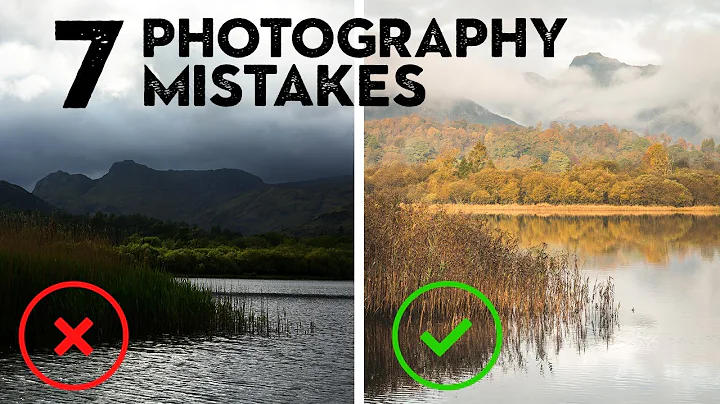
Despite extreme conditions, a well-planned photographic trip can produce spectacular compositions
Clear skies, excellent light and striking features abound in the arid desert regions of the world, making them popular for landscape photographers Very popular place. Crazy hot days are followed by surprisingly cold nights in extreme temperatures, but planning your photography trip wisely - and adding plenty of water to your backpack - can result in spectacular compositions. Here are some of our top tips to get you started...
1 Preparing and Protecting Your Camera
Sand is your nemesis. Work on preventing it from getting into the camera and scratching the lens. You can try this by always placing a UV filter on your lens and a protective jacket on your camera body. These jackets are usually made from silicone rubber and are custom made for a specific model and serve primarily as a protective layer, but they also help prevent sand from getting into the camera's crevices.
However, it would also be wise to keep your camera in a roll-top waterproof bag, or at least an everyday plastic bag. If you're on a dune ridge and it's very windy, seriously consider ditching photography and wrapping up your camera. Get used to using a tripod when you take out your camera, just to prevent it from coming into contact with the sand.

Tip:
No matter how hard you try, sand will find its way into your camera gear. So make sure your camera backpack has plenty of microfiber cloths and a retractable lens cleaning brush so you can gently remove the sand at the end of each shot.
2 Arabic numerals Explore the desert and plan a trip
There are a variety of fabulous desert landscapes around the world. What I'm thinking of is probably the "classic" rippling orange moving sand dunes of the Sahara Desert in North Africa. Similar landscapes can be found in dozens of places, including Sossusvlei in Namibia, the Simpson Desert in Australia, White Sands National Monument in New Mexico, the United States, and Great Sand Dunes National Park in Colorado, plus the American Southwest. The Great Basin, the Mojave, the Sonoran and the Chihuahuan Desert, it’s quite a to-do list.
Whatever you choose, do some research, read how-to books, look at other photographers' photos, and plan out what you think you might want to photograph. You can even go on google earth and start exploring possible locations from your desk - parking lots, viewpoints and the location of the nearest gas station.

Tip:
You need to stay safe in the desert as temperatures can be as high as 40°C/104°C during the day and below freezing at night. You might not take photos on a hot day, but clear skies at night might allow you to try nightscapes. Therefore, it is important to stay as warm and comfortable as possible. If you're cold, you'll make hasty decisions instead of taking your time long enough to shoot.
3 Stay sharp
The same rules apply to desert landscapes and landscapes in general; use a narrow aperture. This way, you can ensure that everything in the photo remains reasonably sharp. This means working between f/8 and f/11 at low ISO. Try your camera's aperture priority mode, which will set the shutter speed for you.

Tip:
The desert is often home to clear blue skies, best photographed with a circular polarizing filter (remember to remove the UV filter). It can also help reduce glare from sand during bright sunlight during the day. However, don't face the sun while your camera is wearing polarized lenses
4 Chasing "Golden Hour" Shadows
The light at noon in the desert is very harsh, and the sun is likely overhead.It is for this reason that you will want to take photos of the desert in the early morning and late afternoon. Just after sunrise and before sunset - the so-called "golden hour" - the sun's lower angle and its softer, redder light will produce striking colors, spectacular shadows and allow for dynamic compositions.
For best results, you should avoid pointing the camera at or directly away from the sun and instead try to capture side-lit scenes. If you can't limit yourself to shooting around sunrise and sunset, know that colors tend to be bolder in the afternoon than in the morning.

Tip:
While having a tripod is useful just to lift your camera off of damaging sand, it also allows you to take long exposure photos. This is useful if you're near sunrise and sunset when you're dealing with low light levels. Aperture priority mode is still available, but always be ready to switch to manual mode and take control yourself
5 Shooting dunes and capturing scale
You want the top of the dune, right? With perfectly rippled sand? So don't go running sand dunes - and messing with all those ripples - before realizing it's (or was) the perfect theme for you! Survey the scene from a distance and choose a dune to photograph, perhaps using a 24-105mm "travel zoom" lens or a 70-200 mm telephoto lens (because the desert is vast, you may need something to get home on).
You should also try to create a sense of scale. So while you probably don't want anyone leaving scuffs in the sand, having someone (or a camel) meandering through the distant dunes can help create an effective composition. The same goes for a lone tree or a "dune-bashing" 4x4.

Tip: Never try to change your shots in the desert. Even if there's no wind, you can bet there's sand and dust in the air and it won't take much to get into your camera. Therefore, it makes sense to use a zoom lens that offers both wide-angle and telephoto for maximum flexibility.
6 How to Photograph Salt Flats
Desert landscapes with more to offer than sand dunes, Salar de Suuni in Bolivia, Badwater Basin in California's Death Valley National Park, and Utah's Bonneville Salt Flats are also considered to be of this type. Classic landscape.
These never-ending white landscapes are both iconic and notoriously difficult to photograph. Definitely avoid bright sunlight during the day, which is only amplified by the color and vastness of the salt flats, and instead take photos closer to sunset. The sky after sunset might be your subject, with the strange and increasingly contrasting hexagonal pattern below adding interest. Go during the rainy season and you'll likely get perfectly flat, mirror-like water... although you'll most likely have to contend with high winds, which will ripple the water and make this kind of shooting impossible.

Tip:
While you may expect to shoot sweeping vistas in arid areas, don’t forget to look down for possible close-ups and abstract compositions. In the desert, you might see water features, plant life, and even wildlife, but what you'll definitely want to capture are the intricate details, patterns, and textures of rocks, rock faces, and especially formations (layers of rock).





















